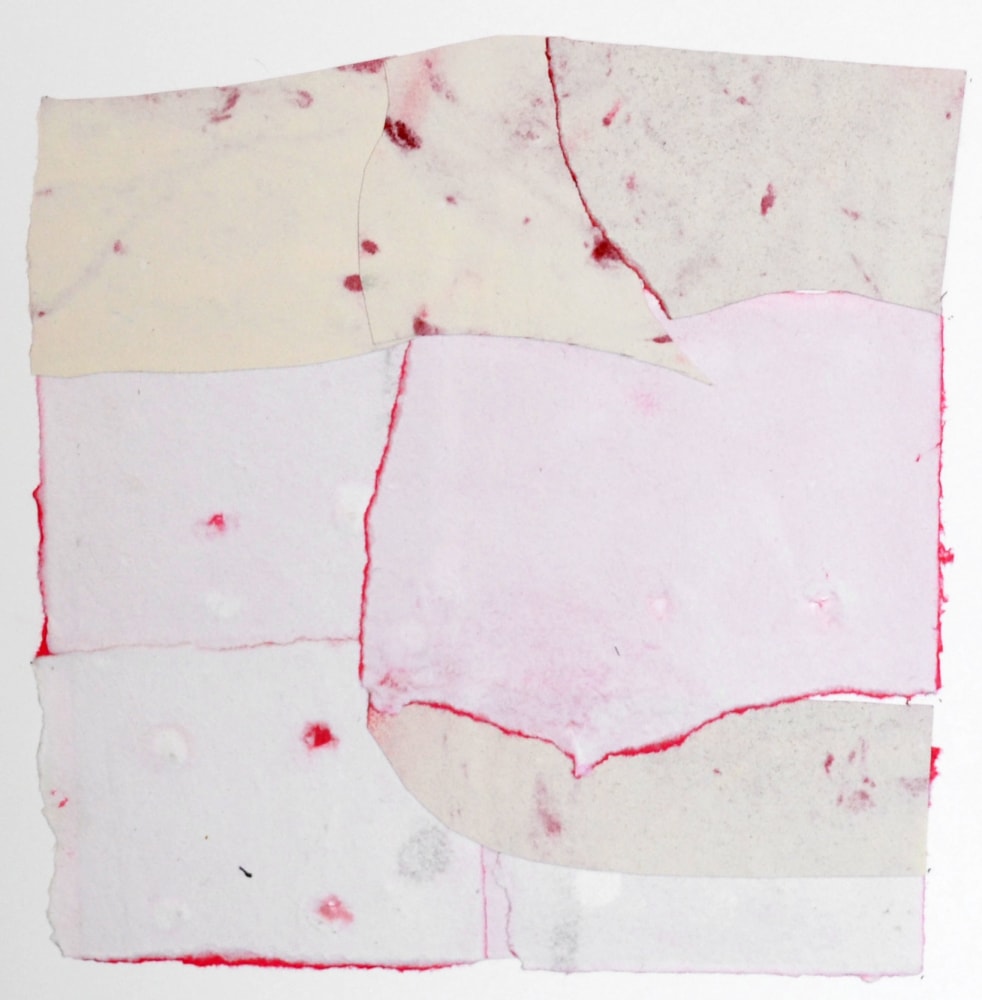
Mark Strand, Untitled, 2013, Paper collage, 9 x 8 1/2 inches, Signed on verso.
MARK STRAND: COLLAGES
May 24 – June 30, 2017
Mark Strand (1934–2014) was widely recognized as one of the great American poets of his generation. Prior to becoming a celebrated poet, he trained as a painter. At Yale in the 1950s, he studied under the influential painter and color theorist Josef Albers. In his later years, Strand returned his attention to the visual arts, in particular to the practice of collage.
Between 2011 and 2014, Strand produced a remarkable series of collages using handmade and hand-colored papers that he created in collaboration with master papermaker Sue Gosin at Dieu Donné studios in New York. There, he employed a unique paper blend comprised of linen rag pulp and Abaca pulp (derived from a plant fiber commonly found in the Philippines). Strand added pigments to this mixture to create colored liquid pulps. Working while the base paper was still wet, Strand “painted” with the colored liquid pulp using brushes, small squirt bottles, and his own hands. This wet-on-wet method lends the works their sense of gestural dynamism as well as their chromatic vibrancy. Once the papers were dry, Strand cut and tore them, assembling the pieces into finished collages that he mounted directly to mat board, leaving ample margins around each composition. Modest in scale and often deceptively simple, Strand’s collages reward careful and extended looking. Semitransparent layers gradually reveal subtle depth of field, while seemingly casual details coalesce into surprisingly precise compositions.
Unlike artists of the historical avant-garde or their more recent postmodern descendants, Strand did not draw from the world of mass culture in making his collages, or indeed from pre-existing material at all. Lacking an external source or referent, Strand’s collages participate in an aesthetic discourse more closely associated with abstract painting than with collage as it is usually understood. Indeed, Strand described his initial forays into collage as “an escape from making meaning,” a shift from a “verbal sense” to a “visual sense,” a form of thinking that he regarded as independent of language. That said, Strand’s collages are not entirely unmoored from history or divorced from his own poetry. Surely his sensitivity to the possibilities of color—although not necessarily his particular combinations and juxtapositions—can be attributed to the early influence of Albers. And despite his careful avoidance of literary or representational content, Strand’s embrace of chance and accident links the collages to a Surrealist tradition of automatism that also inspired many of the Abstract Expressionist painters whose works are clear historical antecedents to the collages. As Francine Prose noted in a 2013 essay on the collages, while the artist chose not to discuss the relationship himself, “the writing and the visual art are clearly the work of the same person, marked by qualities as unique and recognizable as a fingerprint.”
About the artist:
Mark Strand (1934–2014) was one of the great American poets of his generation as well as an accomplished editor, translator, and prose writer. In the course of a career that spanned five decades, Strand won numerous prizes, awards, and fellowships. He was named the U.S. Poet Laureate in 1990, and in 1999 he was awarded the Pulitzer Prize for Poetry for his collection Blizzard of One. Before earning an MFA from the Iowa Writers’ Workshop, in 1962, Strand studied painting at Yale University’s School of Architecture and Design, where he received a BFA in 1959. He continued to make paintings, drawings, prints, and collages throughout his life.
Curated by Jacob Proctor